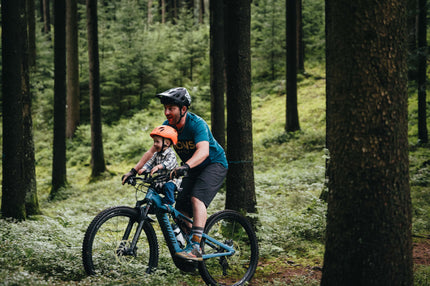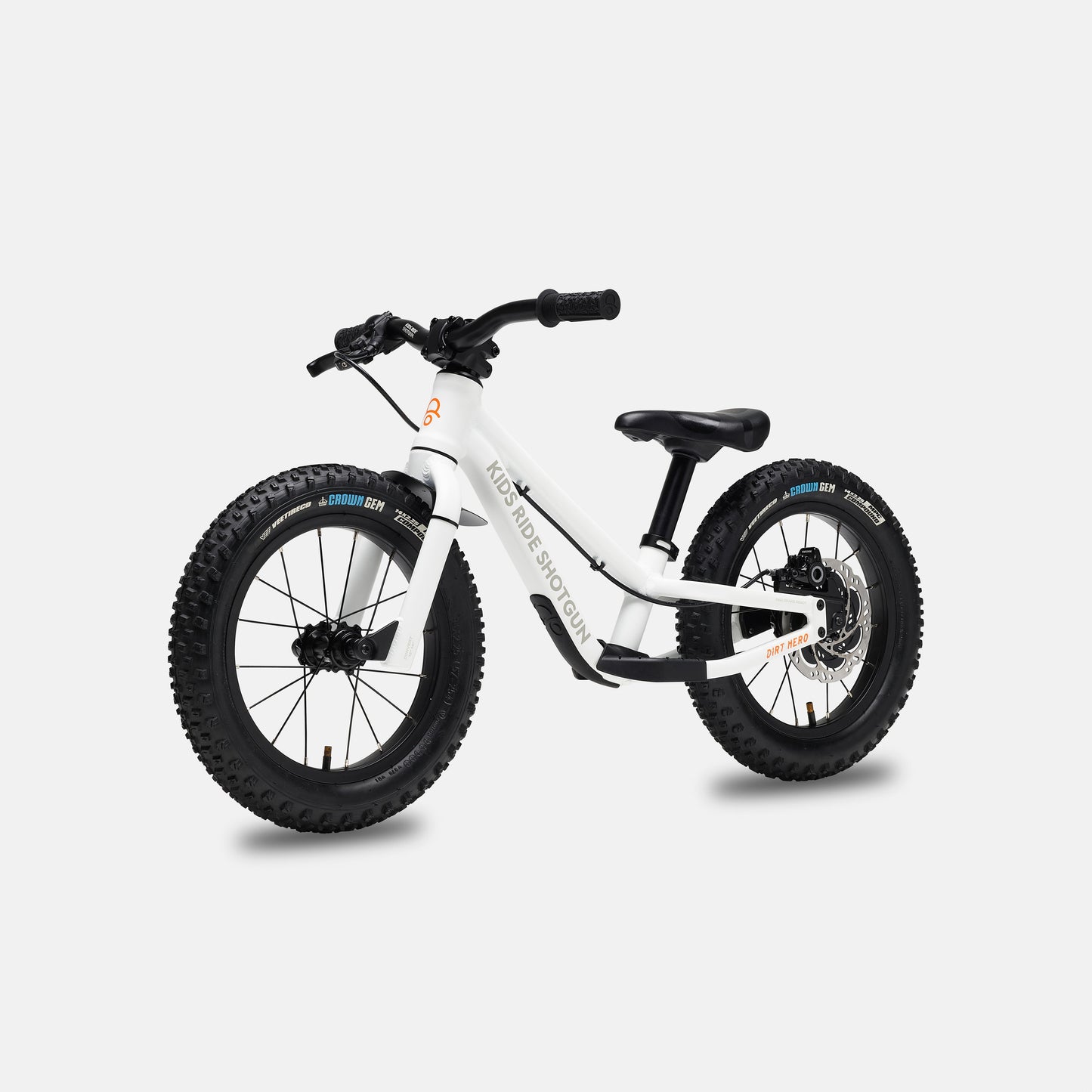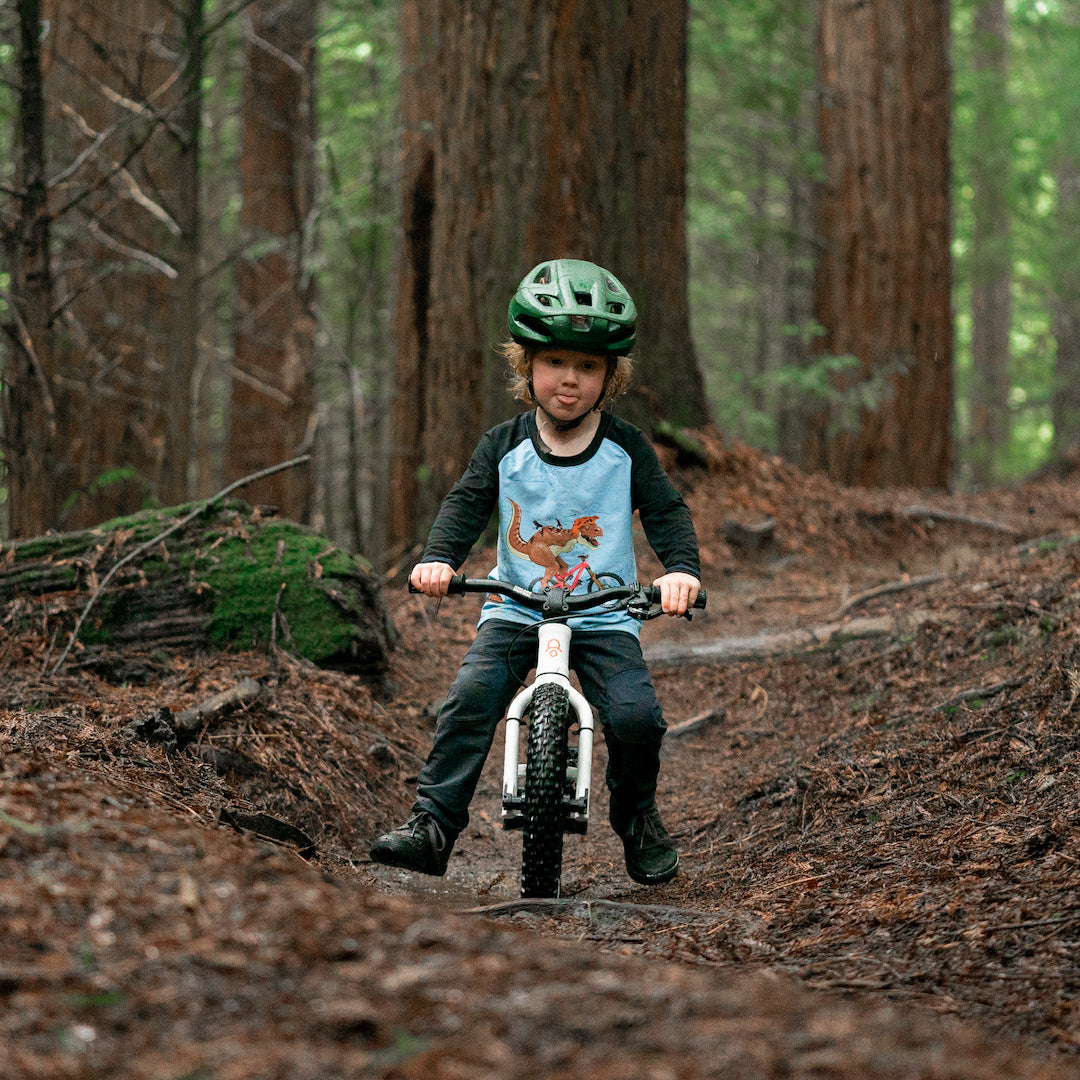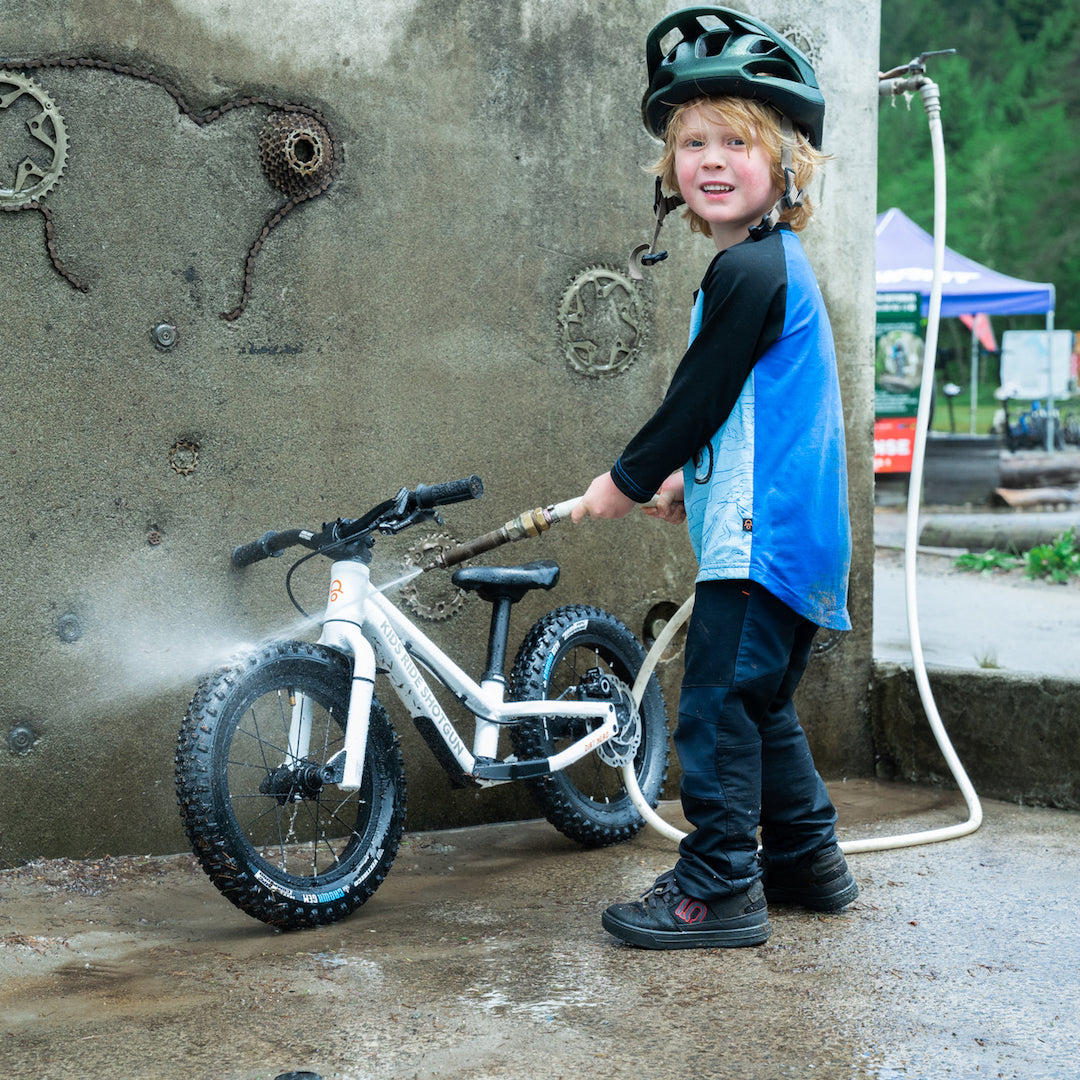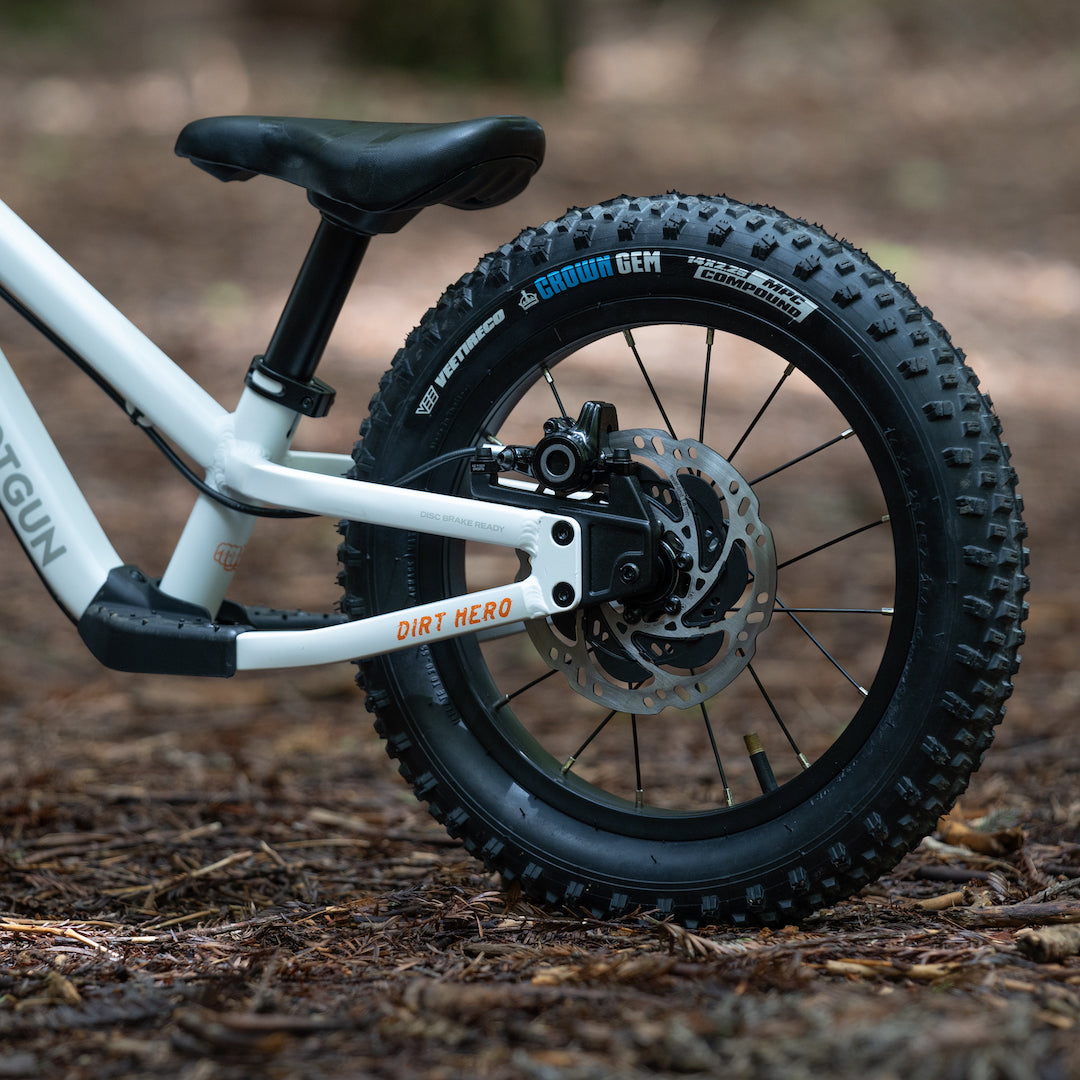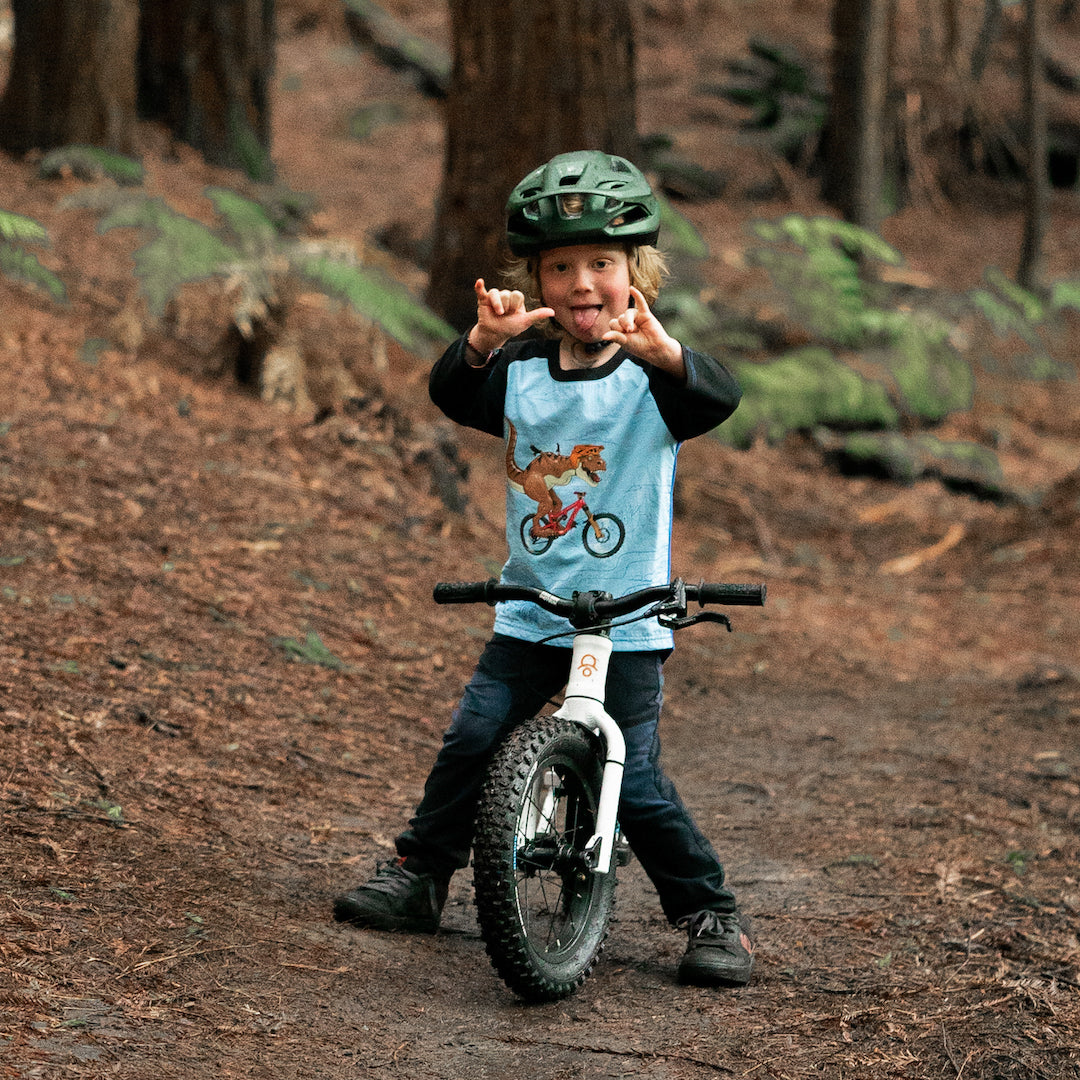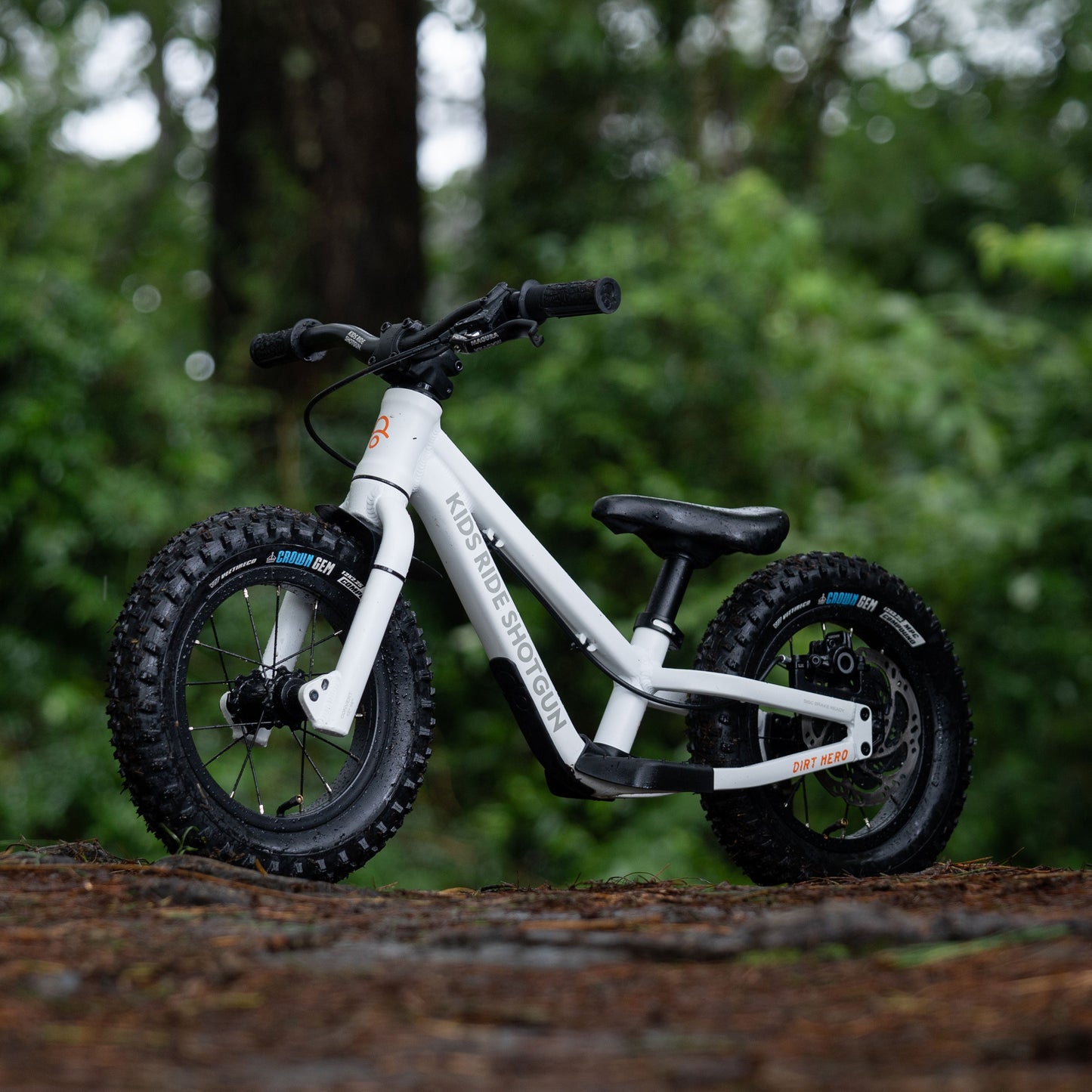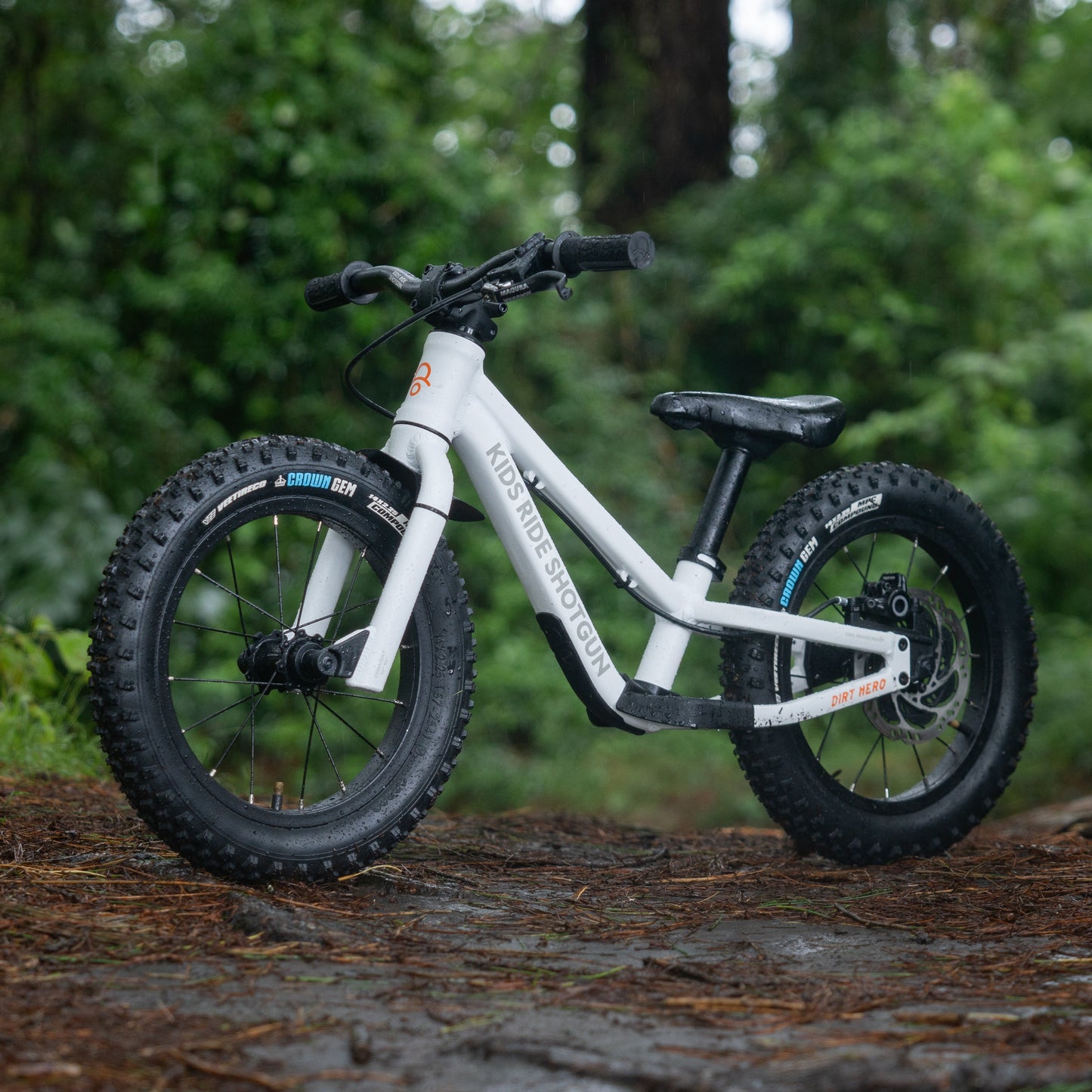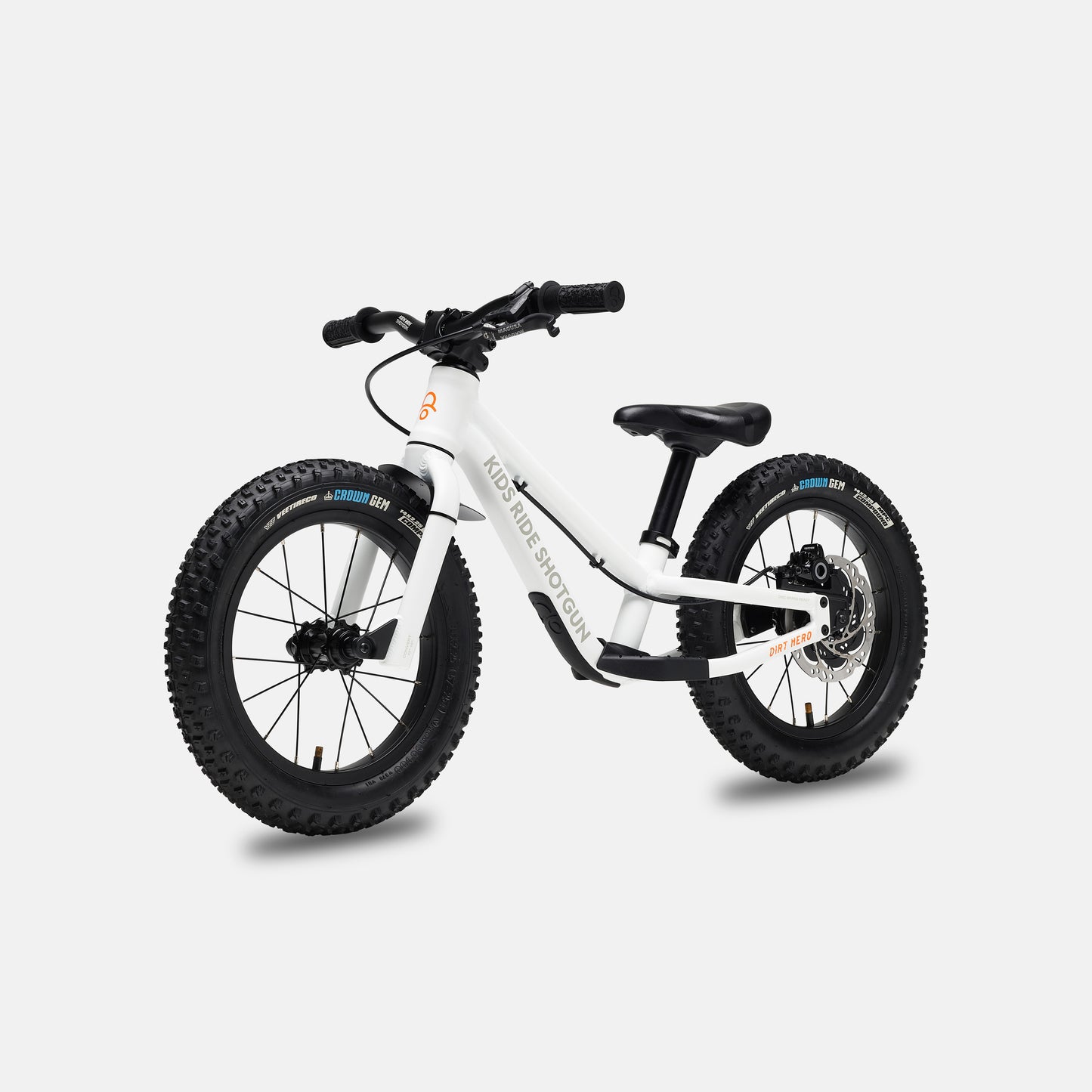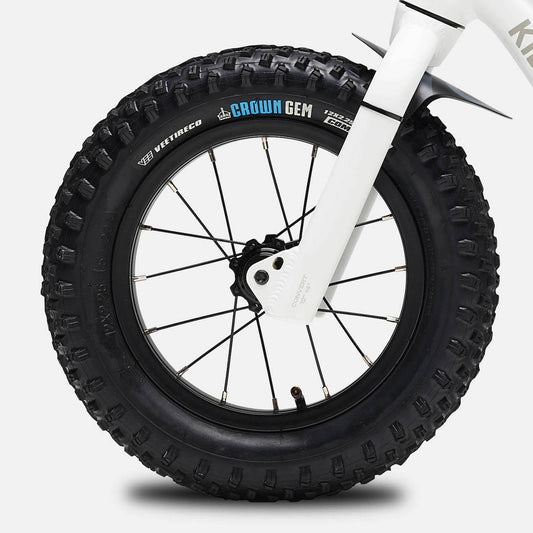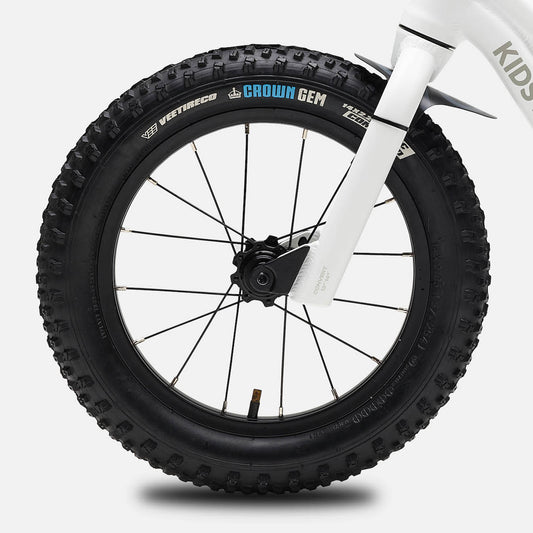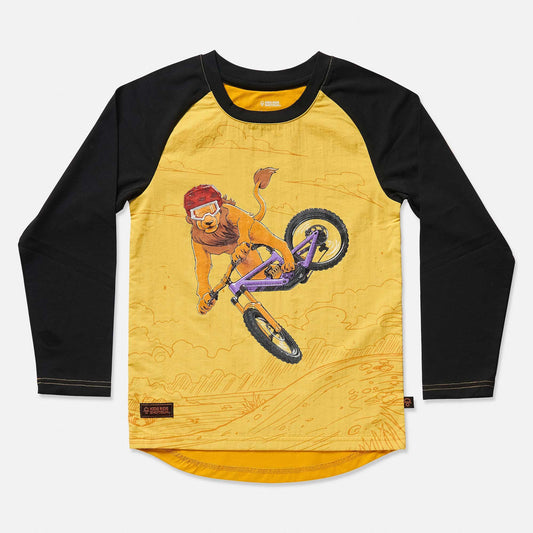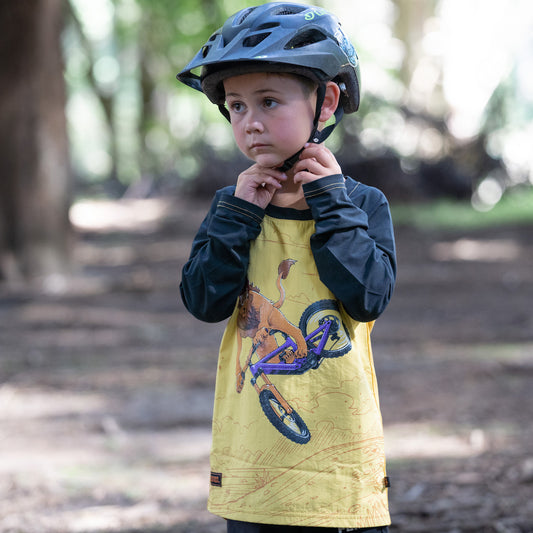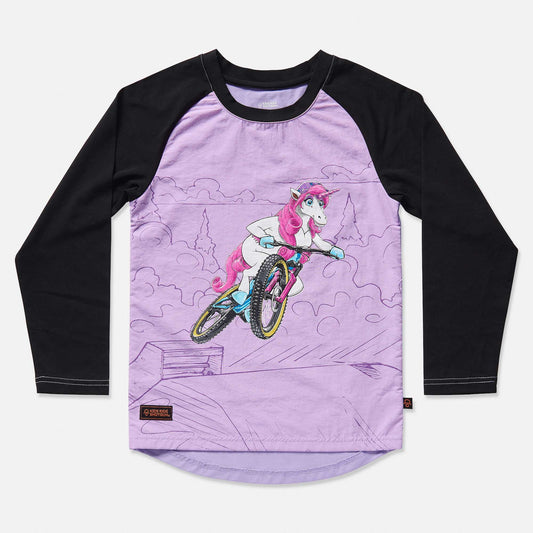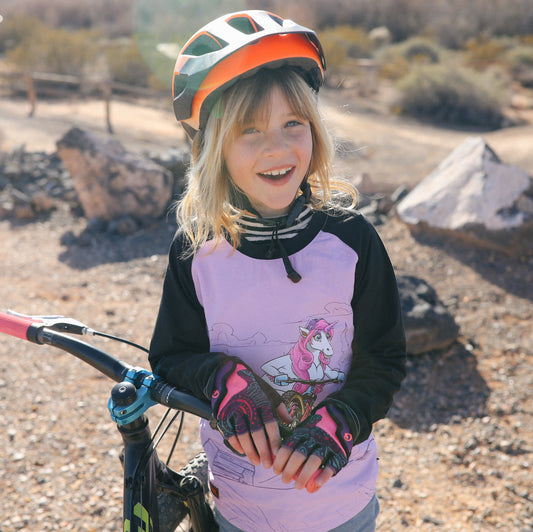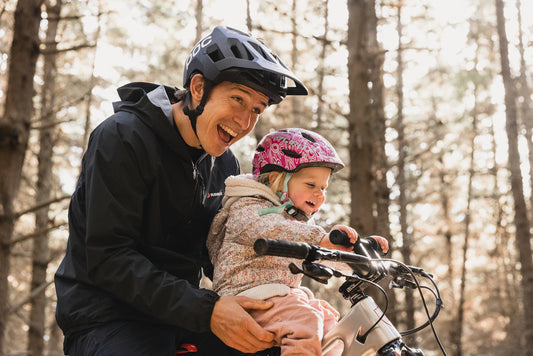Introducing your child to the thrill of mountain biking is an exciting moment, but safety should always be a top priority. To ensure a safe and enjoyable experience, it's crucial to follow some key safety guidelines.
Here are our top tips to keep your little one safe on the trails:
1. Proper Protective Gear:
Mountain biking is a challenging and rewarding activity, however we’re all aware that falling (and getting back up) is all part of the journey. It’s important to mitigate the risk of riding with proper protective gear, which will also see your little one brushing off the dirt and jumping back on their bike with a smile. Here are three 3 key elements of protective gear for little riders:
A. A Well-Fitted, Standards Approved, Helmet:
A well-fitted helmet is the single most important piece of safety equipment for your child. It provides crucial head protection in case of falls or collisions. Ensure the helmet fits snugly but comfortably on your child's head, with the straps securely fastened. Helmets designed specifically for biking offer superior protection. We wrote a whole article about choosing your child's helmet - read it here.
B. Knee and Elbow Pads:
Knee and elbow pads are great for guarding against abrasions, cuts, and bruises during off-road biking adventures. These protective pads cushion impacts and reduce the risk of injury in case of falls. Like helmets, ensure knee and elbow pads fit properly and stay securely in place.
C. Gloves:
Gloves serve a dual purpose—they protect your child's hands from scratches and blisters while also providing a better grip on the handlebars. Choose gloves designed for biking with padding on the palms for added comfort and protection.
2. The Right Bike:
Not all bikes are suitable for riding off-road – make sure to check your kids bike has these key features if you’re planning on hitting the trails.
A. Brakes:
When selecting an off-road balance bike, prioritize models equipped with brakes. Brakes are vital for teaching your child essential stopping and slowing-down skills. They provide a level of control that enhances safety on off-road terrains. Disc brakes, in particular, offer reliable stopping power even in challenging conditions ( more on this in our top article)
B. Pneumatic Tires:
Opt for a balance bike with pneumatic (air-filled) tires. Pneumatic tires provide superior traction and shock absorption, making off-road biking safer and more comfortable. They perform exceptionally well on various surfaces, from dirt trails to gravel paths and rocky terrain. The added grip and control they offer are invaluable for your child's confidence and safety.
3. Proper Maintenance:
Maintaining your kids' balance bike is important for a safe and enjoyable ride together.
A. Regularly Inspect the Bike:
Before each ride, inspect the balance bike for any signs of wear or damage. Check the tires for proper inflation and look for loose fastenings. Ensure to check the brakes are functioning correctly before setting off.
B. Maintain Tire Pressure:
Maintaining the correct tire pressure is crucial for safe off-road biking. Flat tires can affect the bike's handling or damage the wheels, while over-inflated tires may result in a harsh ride. Refer to the manufacturer's recommendations for the appropriate tire pressure and use a gauge to ensure accuracy, noting that riding off-road requires a lower psi than riding on paved surfaces.
4. Supervision and Education:
Hitting the trails with your balance bike kid is an amazing bonding experience and a great opportunity to help them learn and grow. It’s also important to remember that they’re still learning to ride and should never be left to ride on their own.
A. Supervise Your Child:
Always supervise your child when mountain biking together. Keep an eye on their progress and provide guidance when needed. Encourage safe riding practices, such as proper braking techniques and staying on designated trails.
bB Educate Your Child:
Being out riding together is a great opportunity to teach your child about the importance of safety whilst riding. Explain the significance of wearing protective gear, ensure you’re also wearing a helmet to model this behavior, and demonstrate how to use the brakes effectively. Encourage them to ask questions and express any concerns they may have.

